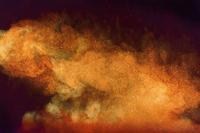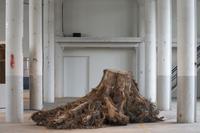A few meters from Het Hem lies a forest. Like all of Hembrug, the ex-military terrain Het HEM is standing on, it was built in the latter part of the 19th century. The forest is built on top of clay, which is why it has been called Kleibos in the past. It has also been called ‘Schokbos’ (Shock Forest), or ‘Plofbos’ (‘plof’ like the sound of a bomb), which refers to the multiple explosions and military tests it has endured. Digging into the history of this forest, and this terrain, we learn that the forest was specifically designed in order to withstand blasts and ammunition tests. For half a century, it both insulated the sound of explosive tests and hid the military activity from view.
For a few years, this forest housed Europe’s largest heron population. In 1967, there were up to 453 pairs of herons. A decade later, the number of herons had massively decreased.
How do you plant a forest specifically in order for it to withstand military intervention?
Why were herons particularly attracted to this forest in the late 60’s?
Why did they leave?
In June 2019 Het HEM opened as a cultural center. In about 3 years it will close for an extensive renovation including the construction of a hotel on top of the old building, designed by OMA. Until a decade or so, the building was an active ammunitions factory. Art is often placed in this role, as the interim between war and commerce. Het HEM is no exception. Is the aim of culture here to simply add value to the real estate property and to help gentrify the area? The cultural institution is, like the land it stands on, built on a militaristic foundation, and readying itself for the explosions of late-stage capitalism. Shock Forest Group hopes to emulate the heron population that briefly saw fit to make this land its home. By studying the terrain, excavating the man-made myths and clay histories that make up its foundation, we hope to understand what the herons saw that made them leave.
Shock Forest Group (2019) is a research team consisting of architects, cartographers, linguists, coders, urban planners, sound makers, biologists, geneticists, graphic designers and engineers. It is an experiment in open research, where the research categories surface as the research develops. It is also an experiment in alternative education, a classroom without a teacher, where the learning emerges as the product of polyphony. One end goal of the Group is to create an “instrument of resonance” which, when placed in a specific context, analyses and orders (or disorders) the local data (and non-data).
The Shock Forest Group instrument of resonance might let out a scream (a sound) which could unveil the multiple layers of local violences and communicate these via sound, light and/or movement.
Shock Forest Group is also an experiment in presence. If traditional research works in a matter akin to a traditional classical music concert, with categories defined a priori, scores set with pre-ordered patterns and a clear end goal, Shock Forest Group works more along
the lines of a free jazz improvisation, excavating from the terrain a polyphony of truths, and letting them ring out, resonate within and through each other, without a stress on harmonic coherence. Shock Forest Group postulates that with this framework, the voices might emerge organically and naturally grow both collectively and individually.
Shock Forest Group ‘s “instrument of resonance” is the sound (scream) of this collective experiment. It is data as both dada and index of injustice. The absurdity of our communal drowning in data is both a backdrop and a condition of data’s potential for elucidation. Shock Forest Group sees sound as both an abstract, emotive but also number-driven code that can act as an emancipatory agent of communication of both statistical presence and emotive presence. This friction is echoed by the Group’s fascination with the herons’ presence in the Shock Forest in the late 60’s.
When does the herons’ decrease in population turn from a number to a feeling?
What is the sound of that transition?


